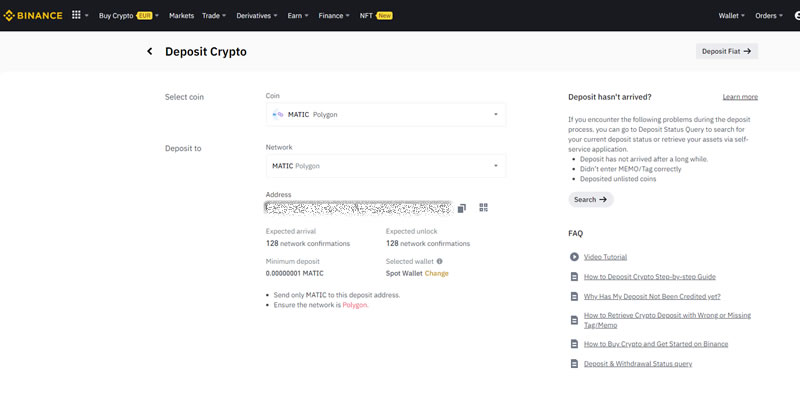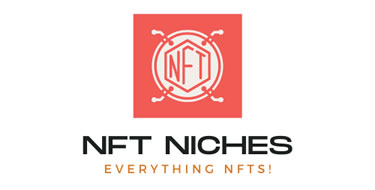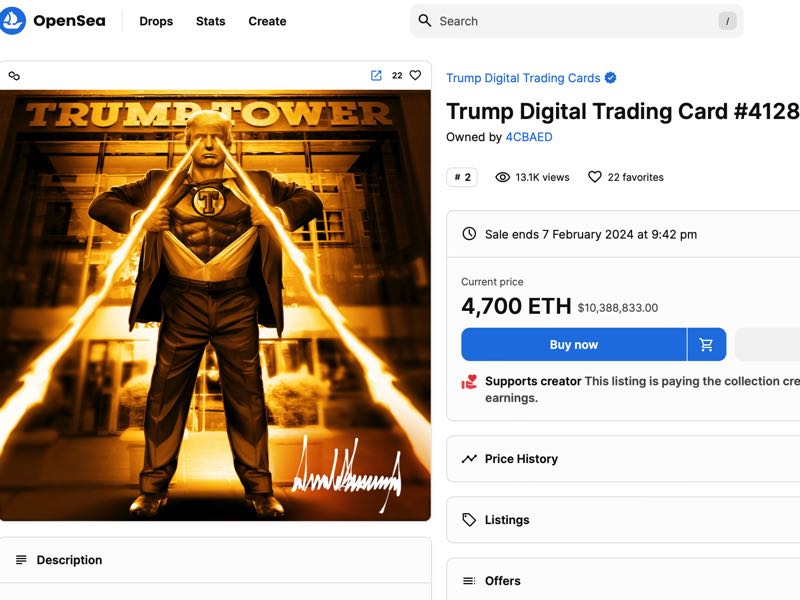Polygon MATIC is the new crypto on the block when it comes to minting and buying NFTs.
Although only a small percentage of NFTs are minting with Polygon MATIC, there are many advantages and a huge disadvantage, for launching NFTs with this cryptocurrency.
I recently had a six-hour experience buying and flipping an NFT in Polygon MATIC. Although the experience was not fun, it did teach me a lot about the process, and I want to share some of those lessons learned.
Despite my rookie errors, there are definitely some intrinsic value points that can only serve as an advantage to anyone looking to buy and sell NFTs.
Buying NFTs using Polygon MATIC can be a complex and frustrating task but more crypto and NFT platforms are expanding their reach and opening trade to allow other ways of minting.
This can be by Ethereum, Solana, Polygon MATIC and even credit cards!
In this guide we will look at my first-hand experience buying and flipping an NFT using Polygon MATIC and how my potential profit of $300 in 20mins turned in to a $70 loss over six hours.
I will also share with you how this adventure could have ended better, and how you can avoid the pitfalls that I not only fell in to but at times launched myself in to!
What is Polygon MATIC
Polygon MATIC is a cryptocurrency where the main transactions take place on the Polygon network. This network uses Ethereum technology but can manage a much higher number of transactions and has a much lower fee rate. Polygon MATIC was created in 2017 as a solution to Ethereum’s issues.
Here is a very good video explaining exactly what Polygon MATIC is, in as easy to understand way as possible:
Although Polygon MATIC cryptocurrency trades predominantly on the Polygon network, it can also be traded on the Ethereum network.
Unfortunately, trading Polygon MATIC on the Ethereum network brings with it the issues of low transaction volume (30 transactions per second) and very high gas fees as often demand is much higher than supply, which increases the gas fee.
As Polygon network can manage thousands of transactions per second, as opposed to just 30 on the Ethereum network, it means gas fees are considerably lower.
On average gas fees on the Ethereum network to mint an NFT are $115, compared to just $0.02 on Polygon MATIC. This we will discuss in a little more detail later.
Advantages of Buying an NFT with Polygon MATIC
Buying an NFT using Polygon MATIC, on the Polygon network, has one distinct advantage over Ethereum, and that is the very low gas fees.
Any NFT minter or buyer will know how eye watering the Ethereum gas fees have become.
On average it costs $116 in gas fees to mint an NFT on the Ethereum network. This can range between $60 and $300+ during peak periods.
The average cost to mint an NFT using Polygon MATIC is just a few cent!
This makes an incredible difference to those who look to make short term profits when buying and selling NFTs.
If an NFT is listed for 0.08 ETH but costs a further 0.04 ETH in gas fees, it means an NFT needs to rise in value by 50% just to breakeven.
This is not the case with NFTs minted using Polygon MATIC.
Almost every dollar the NFT rises in value become profit.
The biggest barrier to entry using Polygon MATIC was the lack of popular marketplace to list and sell NFT collections on the second-hand market.
This changed recently when the largest NFT marketplace, OpenSea, began listing collections in Polygon MATIC.
The listing also allows secondary trading, also in Polygon MATIC.
The NFT industry launched in 2017 with the release of CryptoPunks. This is arguably the first NFT collection but for the purpose of popularity we will keep with the year 2017.
NFTs trading on Polygon MATIC has really taken off in the past 12 months, and OpenSea only welcomed listing in the past few months.
This is an incredibly new industry with so much potential, and so buying NFTs using Polygon MATIC is certainly a niche to have one eye on as it continues to grow.
Disadvantages of Buying an NFT with Polygon MATIC
New technology can encourage early adopters who can capitalize on being in front of the game, but it is often overlooked just what early adopters have to go through.
Trading NFTs using Polygon MATIC on the Polygon Network is so new, many platforms, wallets and trading sites have not quite caught up.
Coinbase is one of the largest cryptocurrency trading platforms, and yet although they allow trade in Polygon MATIC, this is exclusive across the Ethereum network – not Polygon network.
It can become confusing but if you, by mistake, sent Polygon MATIC on the Polygon network into a Polygon friendly Coinbase wallet you are likely to lose your cryptocurrency.
Coinbase is currently not an option, but step in Binance.
Binance are also one the largest cryptocurrency trading platforms, and only recently they are allowing trading and transferring Polygon MATIC on the Polygon network.
This means a trading platform with which to make a purchase, and the ability to send to a Polygon network friendly wallet like MetaMask to connect to an NFT minting website, or secondary marketplace like OpenSea, and make a purchase.
This also means cashing out once an NFT sells becomes easier.
The Polygon MATIC can be transferred from a MetaMask wallet back to Binance to sell the cryptocurrency back to dollars, and cash out to your bank account.
Previously the only option available to was to bridge your Polygon MATIC to and from the Polygon network and Ethereum network, but this came with up to a $50 each way gas fee!
With gas fees incredibly low, OpenSea allowing the buying of NFTs using Polygon MATIC and Binance also allowing buy and sell trade using it’s trading platform, it means the barriers to entry are reducing.
How to Buy an NFT using Polygon MATIC
Buying NFTs using Polygon MATIC is as straight forward as buying NFTs with any other cryptocurrency.
You just need to have MATIC in your wallet, and on the right network, to buy or mint.
It is possible to buy MATIC on the Ethereum network using Coinbase, and then bridge (transfer) the MATIC from the Ethereum network to the Polygon network.
Although this is possible it isn’t recommended as any transactions on the Ethereum network incur high gas fees.
Bridging MATIC between the Ethereum network and Polygon network costs an average of $52!
An alternative is to buy MATIC on the Polygon network using a new service launched by Binance.
Binance, one of the largest cryptocurrency platforms and trades 24 hours a day, 7 days a week. They have recently opened the possibility to buy and sell on the Polygon network.
Once your Polygon MATIC are in your Binance wallet you can either connect this to an NFT minting site, or NFT marketplace – or transfer your MATIC from your Binance wallet to your MetaMask wallet and then use your MetaMask wallet to buy your NFT.
Once your MATIC are in the right wallet, and on the right network, you can buy or mint an NFT as normal.
How to Sell Polygon MATIC and Cash Out
One recent obstacle I encountered was selling an NFT in Polygon for the first time and trying to sell my MATIC and transfer the cash back to my bank account.
Selling an NFT on OpenSea in MATIC meant receiving MATIC on the Polygon network.
With my MATIC profit in my MetaMask wallet I set out to look for options to cash out.
This initially proved a challenge, as I looked at all options available.
I couldn’t transfer the MATIC back to Coinbase because Coinbase only accepts MATIC on the Ethereum network.
I could bridge the MATIC from the Polygon network back to the Ethereum network, but the quote was $51.25, and would eat in to my NFT flip profit.
The solution is to transfer Polygon MATIC to a Polygon network wallet address on Binance.
Once logged in to your Binance account you have the option to Transfer cryptocurrency back to your Binance wallet.
Make sure you choose the correct cryptocurrency (MATIC) in this example, and the correct network.

If you choose either option incorrectly you could lose your cryptocurrency or the best-case scenario is paying Binance to retrieve your crypto. I had to do this at a cost of $70 (0.001 BTC)!
Why is Polygon MATIC Becoming Popular for NFTs
There are two main problems facing NFT buyers today. One problem is helped by Polygon MATIC, the other is only made worse by Polygon MATIC.
One such problem is the very high gas fees incurred on transactions within the Ethereum network.
A $116 average fee just for minting an NFT is crazy!
Part of the reason for the high fee is the Proof of Work validation model used by the Ethereum network. This model means high energy costs solving complex algorithms to validate transactions, which are passed on through gas fees.
Compare this to an average of $0.02 gas fees when minting on the Polygon network.
This means it’s 580,000% more expensive to mint an NFT with Ethereum than Polygon MATIC!
It doesn’t take long to see why Polygon MATIC is seeing record numbers of investors, and NFT collections.
It is still way behind the popularity of Ethereum, but it is gaining ground.
The fast speed at which Polygon MATIC is taking off is causing technical issues for platforms, both trading and NFTs, to catch up.
As we have already discussed OpenSea are now allowing Polygon MATIC collections, and Binance have recently opened their virtual trading floor for Polygon network trade.
This alone has significantly made buying NFTs on Polygon MATIC much more attractive, but there is some way to go to make the process as smooth and hassle free as the Ethereum network using Coinbase, MetaMask and OpenSea amongst others.






